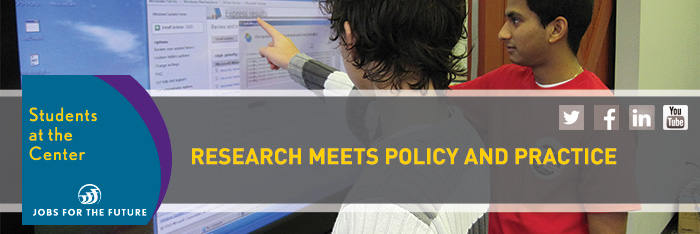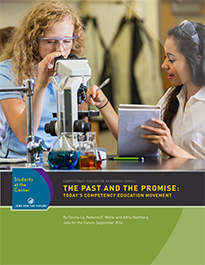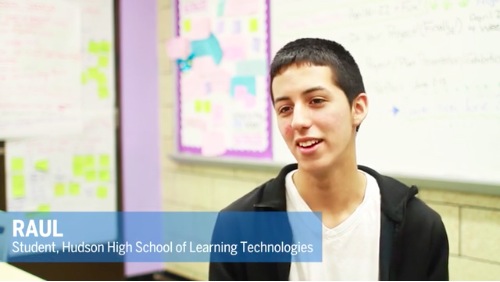
A monthly round-up of the latest student-centered and deeper learning research, news, resources, & tools at your fingertips.

 Competency education is attracting significant interest as a promising way to help meet our national priority of ensuring that all young people are ready for college and careers. In competency-based schools, students advance at different rates, based on their ability to demonstrate mastery of learning objectives. Teachers provide customized supports to help propel everyone to proficiency.
Competency education is attracting significant interest as a promising way to help meet our national priority of ensuring that all young people are ready for college and careers. In competency-based schools, students advance at different rates, based on their ability to demonstrate mastery of learning objectives. Teachers provide customized supports to help propel everyone to proficiency.
The Past and The Promise: Today’s Competency Education Movement is the first paper in Students at the Center's new Competency Education Research Series. The Past and the Promise lays a foundation for assessing the potential of competency-based models, grounded in an exploration of the outcomes from previous like-minded efforts. Recent research and theory from the learning sciences shows that a personalized approach to competency education may help better prepare all students from all backgrounds for deeper learning and for life after graduation. New information technologies are making it feasible to try these strategies on a large scale. Putting in place an equitable system necessitates navigating the many—but far from insurmountable—political and implementation challenges facing personalized competency education.
Access The Past and The Promise: Today’s Competency Education Movement >
We encourage you to share this paper with others in the field. We'd love to hear your thoughts on Twitter #CompetencyEd

edutopia: Comprehensive Assessment
The Comprehensive Assessment portion of the Edutopia website connects educators to a large number of Edutopia resources, including articles, discussions, videos, tip sheets, and guides that delve into the challenges of providing comprehensive assessment.
Teaching Perseverance and Resilience
Used together, the five resources listed here can help teachers wrestle with questions like: What is the importance of grit and other key character traits that support learning? How might schools develop and assess them?
What Were They Thinking? Exploring Teenage Brain Development: A Lesson Plan for High School Students
This New York Times lesson plan was created to introduce students to the adolescent brain. By the end of the lesson, students should be able to answer the lesson’s guiding question: what implications does brain imaging research on teenagers have for reconsidering societal rules and responsibilities for this age group?
Access past highlighted and other curated tools >

 The Big Idea: Student-centered Learning in New York City High Schools
The Big Idea: Student-centered Learning in New York City High SchoolsJoy Nolan, Digital Ready
In summer 2013, Digital Ready, a program of New York City Department of Education’s Office of Postsecondary Readiness and the Mayor's Office of Media and Entertainment, began work with 10 high schools to promote research-based student-centered innovations, largely based on ideas and papers from Students at the Center (such as Motivation, Engagement, and Student Voice). In this blog, Instructional Designer/Curriculum Specialst Joy Nolan shares her two biggest takeaways from Digital Ready's first year, along with examples from schools.
Student-centered Practices for Underserved Youth
Adriana Martinez, Innovation Lab Network
Guest Post, EdWeek's Learning Deeply Blog
The notion that students from low-income backgrounds are incapable of deeper learning has been difficult to challenge because educators have not had access to clear and compelling examples that show how it can be done. This post draws from a recent study to provide such examples and identify essential instructional practices that other schools can adopt to create deeper learning environments.
Designing Relevant Learning
Doug Fisher and Nancy Frey, Education Leadership
In this Show & Tell video column, watch as an accomplished high school geometry teacher actively engages her students in mastering the properties of mid-segments of triangles. Read more about engaging diverse learners in Latino/a and Black Students and Mathematics.

Like Jobs for the Future on Facebook to stay connected with Students at the Center.
Tweet @jfftweets, using #SCLChat, #deeperlearning, or #competencyed about how you are using student-centered learning strategies and achieving deeper learning in the classroom!
Leave your thoughts and comments on the Students at the Center website. We would love to hear about what is happening in the field.
Please forward this email to your colleagues so they can subscribe to our newsletter.

